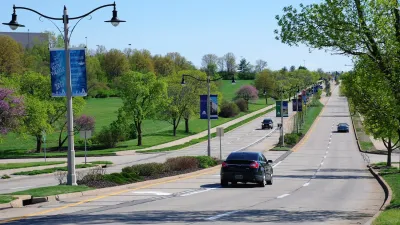In response to the latest Southern California wildfires, site locations and climate must be more carefully considered by the people who build and approve subdivisions, writes Christopher Hawthorne.
"Since the middle of the 20th century, this is how we have developed much of our new housing in the U.S., and particularly in Southern California: by pushing deep into canyons and deserts and onto flood plains. We build reassuringly familiar-looking subdivisions, decorated with vaguely Spanish or Mediterranean accents, in locations that by land-use standards -- and by common-sense standards -- are truly exotic. We build with the unstinting belief that growth is good and that progress in the form of various kinds of technology -- new building materials, military-style firefighting, a vast system of pumps and levees -- will continue to make it possible to construct new pockets of nostalgic architecture virtually anywhere."
"But maybe our nostalgia should extend beyond red-tile roofs to include earlier lessons about how and where it is safe to build. This country's culture as a whole is in the midst of a profound shift from the unshakable confidence that marked the so-called American Century to a new recognition of risk, conservation, even fragility. Green architecture, with its rather old-fashioned emphasis on paying attention to site and climate, is part of that shift. But those who build and approve new hillside developments -- 'the lords of subdivision,' as nature writer Richard Lillard called them, the 'replanners of the Earth's surface' -- have barely acknowledged it."
FULL STORY: New developments mask wild land's deadly threat

Planetizen Federal Action Tracker
A weekly monitor of how Trump’s orders and actions are impacting planners and planning in America.

USGS Water Science Centers Targeted for Closure
If their work is suspended, states could lose a valuable resource for monitoring, understanding, and managing water resources.

End Human Sacrifices to the Demanding Gods of Automobile Dependency and Sprawl
The U.S. has much higher traffic fatality rates than peer countries due to automobile dependency and sprawl. Better planning can reduce these human sacrifices.

Trump: Federal Government Won’t Pay for California HSR
The President has targeted federal funding for the California bullet train project since his first administration.

San Francisco Enhances Urban Planning Initiatives with Green Infrastructure
San Francisco incorporates green infrastructure in its city development initiatives, elevating the importance of sustainability in urban planning.

Chicago Approves Green Affordable Housing Plan
The Mayor’s plan calls for creating a nonprofit housing corporation tasked with building affordable housing that meets Green Building standards.
Urban Design for Planners 1: Software Tools
This six-course series explores essential urban design concepts using open source software and equips planners with the tools they need to participate fully in the urban design process.
Planning for Universal Design
Learn the tools for implementing Universal Design in planning regulations.
Tyler Technologies
New York City School Construction Authority
Village of Glen Ellyn
Transportation Research & Education Center (TREC) at Portland State University
Chaddick Institute at DePaul University
Institute for Housing and Urban Development Studies (IHS)
Regional Transportation Commission of Southern Nevada
Toledo-Lucas County Plan Commissions


























